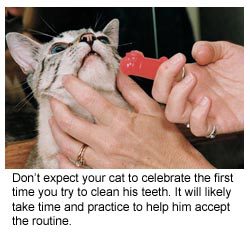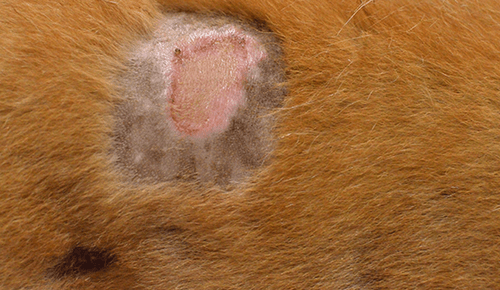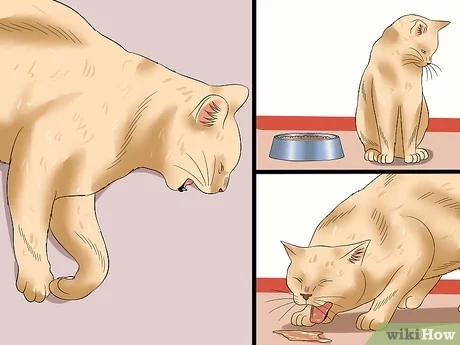
Rabies in cats
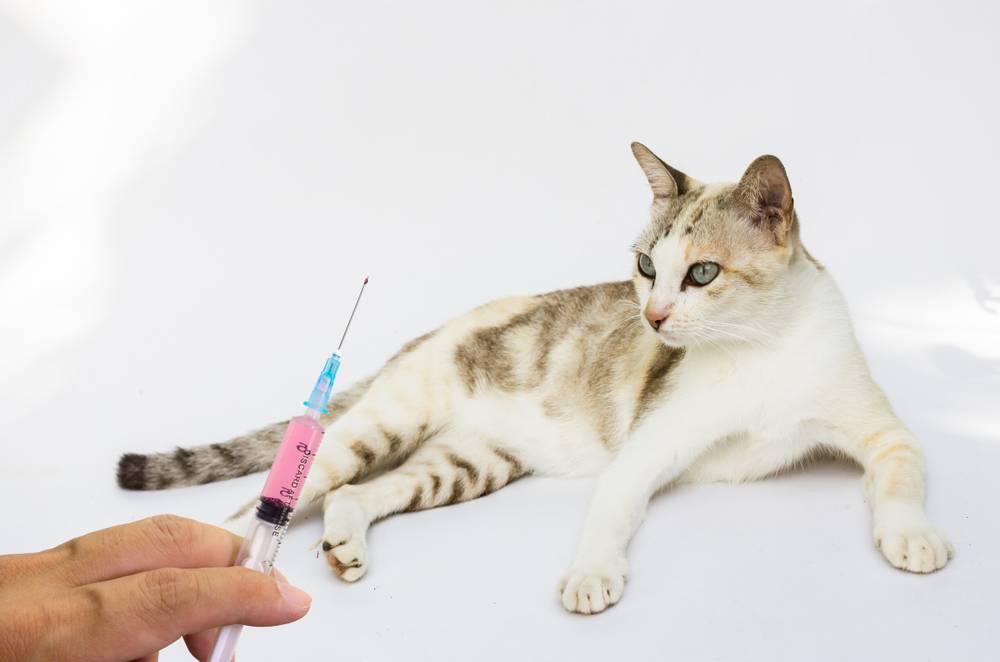
Contents
Rabies in Cats Essentials
- All cats are susceptible to the disease, regardless of gender, age and breed;
- Transmission of the virus occurs primarily through the saliva of an infected animal;
- From the moment the virus enters the body to the development of the disease, it can take an average of 2 to 3 months, in rare cases from 1 week to 1 year;
- From the moment a cat becomes infectious to humans, the death of the animal occurs within 10 days, there is no cure;
- Timely vaccination helps to avoid the disease with a probability of up to 100%.
Causes of the disease
The main route of transmission of the virus from a sick cat to a healthy one is through saliva, since it contains the maximum concentration of this virus. Saliva mainly enters wounds and the bloodstream through bites, but can also enter the body through mucous membranes and even, according to some reports, through intact skin when licking each other. Cases are described when domestic cats who lived in a private house outside the city, but did not have contact with other cats and dogs, found the rabies virus. It was found that the infection occurred after wood urchins ate from their bowls and left their saliva there. It is also not uncommon to find signs of rabies in cats that catch and eat infected rodents.

In the United States, cases of infection by airborne droplets after visiting caves that are densely populated by bats have been noted, but not everyone who visited the cave got sick. Also in the laboratory, it was possible to achieve infection by the oral route when ingesting contaminated food and water. But so far, both of these transmission routes remain controversial.
Symptoms and signs of rabies in cats
Symptoms of the development of rabies in cats can be divided into 4 stages. It is not always possible to clearly trace the boundaries between these stages, since the disease can proceed very rapidly. At the same time, the symptoms of rabies in small kittens are similar to those in adult animals.
Consider how each of the stages of rabies in cats manifests itself:

The incubation period
There will be no obvious clinical symptoms at this stage, but the virus has already begun its movement and reproduction along the nerve fibers towards the brain. The first signs of rabies in cats include a slight decrease in activity, loss of appetite, and drowsiness. The same signs are usually found in most other infectious and non-communicable diseases. The cat may become more sociable, or, conversely, silent. The voice may become more deaf, but it may not change at all. The incubation period lasts an average of 2-3 months, sometimes from 1 week to 1 year.
prodromal period
Its duration is about a day. At this stage, the cat already shows signs more characteristic of rabies. The owner can already note changes in behavior in the pet that cannot be associated with any events in the cat’s life, that is, no changes in the environment have occurred. If earlier the cat was self-sufficient and did not need human attention, now it can become very affectionate, constantly looking for contacts with the owner. But if the cat has always been sociable, now, on the contrary, it can begin to hide, avoid caresses. Also from the unusual symptoms can be identified picacism – eating inedible objects. In such cats, toys, stones and even cutlery can be found in the stomach.
Excitation period
Most often in cats, rabies occurs in a violent form, which is not typical for many other animals. The duration of the stage is about 7 days, or in case of a hyperacute course, the disease immediately passes to the 4th stage. The concentration of the virus in the saliva at this moment is maximum, and the cat is most dangerous to other animals and people. The cat at this stage has increased irritability, extreme nervousness. Any loud sound or flash of light provokes aggression, the animal is ready to fight with all its might. In addition to getting dangerous injuries from teeth and claws, there is a huge likelihood of contracting a virus. In addition to aggression, various nervous phenomena can be noted: skeletal muscle spasms, convulsions, walking without a goal. Hydrophobia (rabies is the second name for the rabies virus) may develop, due to a spasm of the muscles responsible for swallowing. Salivation, most often frothy, may be noted.
Period of paralysis
This is the final stage of development. At this stage of rabies in a cat or a cat, the following symptoms can be observed: convulsions, uncoordinated movements, paralysis of the eye muscles, lower extremities, and also the zygomatic muscles. Death occurs due to paralysis of the respiratory muscles.
Forms
There are three forms of rabies in animals:
Exuberant form
We discussed in detail the violent form of rabies in cats in the section on symptoms and signs, since it is the most common form of rabies in cats, but there may be exceptions. The main difference between this form and the rest is that the animal from an affectionate domestic animal becomes wild and aggressive. This happens due to severe brain damage, we can say that the virus controls the animal and makes it bite others, thus spreading with saliva.
Quiet form
With this form of flow, the excitation is not expressed at all or is weakly expressed. Sometimes rabies in kittens can manifest in this way. Paralysis progresses rather quickly, swallowing is difficult, there is profuse frothy salivation. The look of the animal is inexpressive, indifferent, directed, as it were, into the void. There may be prolapse of the third eyelid, strabismus, different pupil sizes. Death occurs even faster than with a violent form, on the 2-4th day.
Atypical form
This form of flow is extremely rare. Refusal to eat, exhaustion of the animal, inflammatory processes in the gastrointestinal tract, hemorrhagic diarrhea are noted. Aggression is not observed. This form can last up to 3 months or longer.
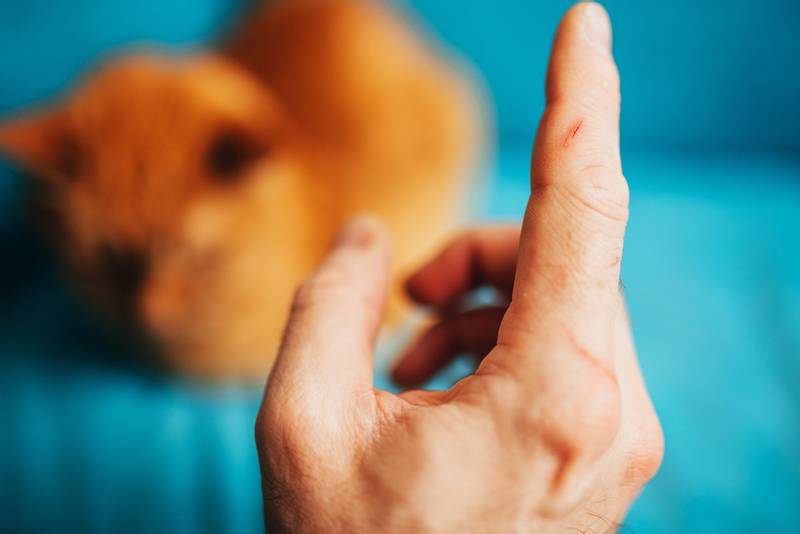
Diagnosis of rabies in cats
Unfortunately, there are no lifetime tests for rabies in cats. To make a preliminary diagnosis, one can rely on the available history data: the animal had access to the street, there was contact with wild or stray animals, there were episodes of hunting for mice and other rodents, hedgehogs, foxes and other forest animals entered the area around the house. It is also necessary to pay attention to clinical symptoms: changes in behavior, various nervous phenomena, eating inedible objects, salivation. An animal suspected of having rabies is left in isolated quarantine for up to 10 days. During this period, progression of symptoms and death should be expected. It is possible to confirm the diagnosis only by examining sections of the brain using microscopy, that is, posthumously.
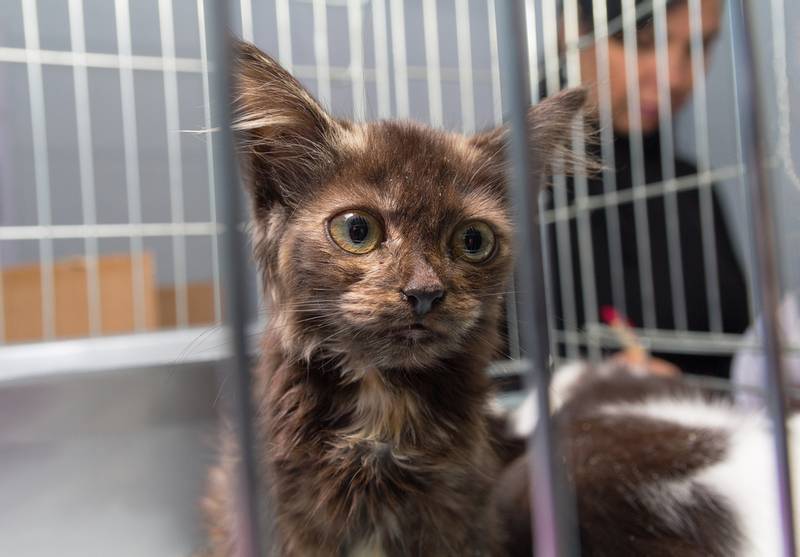
Rabies vaccinations
Most rabies vaccines on the market offer immunity for at least 1 year after vaccine administration, some provide protection for up to 3 years. Russia is a disadvantaged country regarding rabies, therefore, according to Russian law, all cat owners are required to vaccinate their pets against this disease annually. Fully house cats should also be vaccinated against rabies. Special services carry out vaccination of wild and homeless animals, this is especially true in regions that are unfavorable for rabies. Vaccination is carried out by the oral method, that is, in the forests and habitats of homeless animals, edible baits are laid out, inside of which there is a capsule with the vaccine. Vaccination is the best prevention of rabies in cats, the risk of adverse reactions from vaccination is immeasurably small compared to the damage that infection can cause.
You can get your cat vaccinated at any veterinary clinic. Clinics usually have several vaccines to choose from:
- Single-component vaccines that provide protection only against rabies;
- Complex preparations that will protect your pet from several diseases at once. The basic diseases include vaccinations against panleukopenia, calicivirus, rhinotracheitis.
The doctor will help you decide on the choice of vaccine during the examination.
To prepare for vaccination, you need the following:
- The cat must be completely healthy and have no complaints. If you have any doubts about the condition of the pet, you must first go to the clinic for an examination;
- 10-14 days before the scheduled vaccination, it is necessary to deworm the cat. If helminth treatments are regular all year round (at least 2-4 times a year for a domestic cat), then additional treatment before vaccination is not required.
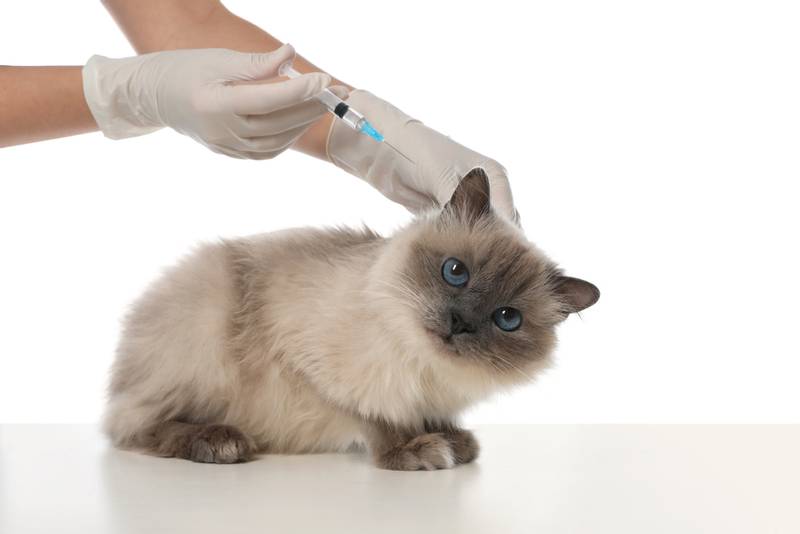
Before the vaccination, the doctor will once again make sure that the pet is in good health, examine it, and, if necessary, prescribe additional diagnostics.
Danger to humans
Rabies is a huge danger to humans. Infection will lead to fatal cases with a 100% probability. If you are bitten by an animal suspected of having rabies, you must immediately undergo a set of preventive measures aimed at preventing the development of the disease. This helps prevent the virus from entering the central nervous system and preventing the development of clinical symptoms. At the same time, the fact that the animal that bit you, vaccination should not play a major role in the decision on the implementation of preventive measures.
First of all, it is recommended to make abundant washing and local treatment of the wound as soon as possible after contact. For these purposes, you can use soap, detergents, povidone-iodine. Wash the wound for at least 15 minutes. Next, you need to contact the nearest hospital for the purpose of administering the rabies vaccine. In some cases, there may be indications for the administration of rabies immunoglobulin. Such a set of measures helps to protect yourself from the development of the disease as much as possible.
The article is not a call to action!
For a more detailed study of the problem, we recommend contacting a specialist.
Ask the vet



